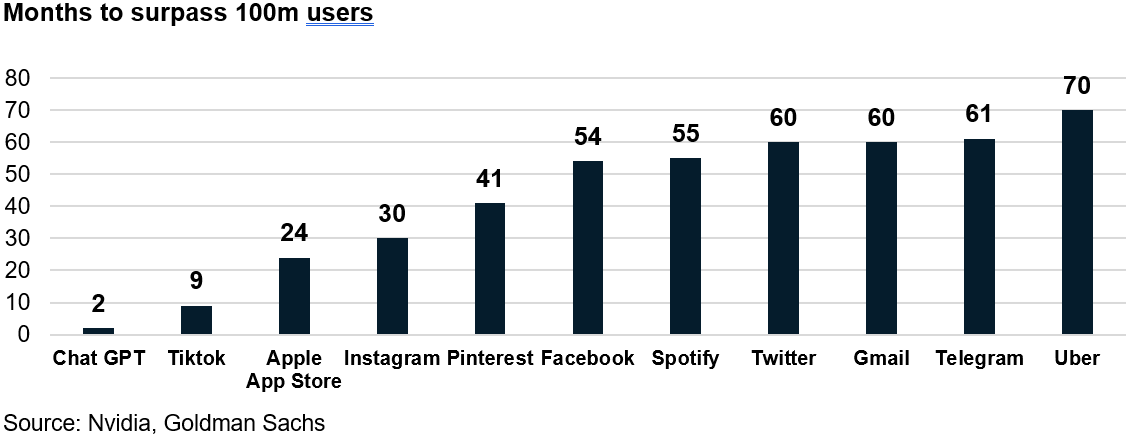Introduction to the metaverse
The discovery and research of new disruptive thematics is central to our investment process within the Orca Global Disruption Fund. We’ve identified the metaverse as a future computing platform with the potential to reshape how we explore and engage with digital content.
We believe the metaverse has significant disruptive potential as our familiar physical “real-world” converges rapidly with an increasingly digital experience. We see emerging use cases for business and consumers to leverage new technology.
This article explores the concept of the metaverse, its key players and how the Fund is positioned to potentially benefit from its emergence.
So what exactly is the metaverse?
The term metaverse (and avatar) were popularised by science fiction author Neal Stephenson’s Snow Crash (1992), initially referring to a virtual reality (VR) based successor to the internet. In Stephenson’s novel people use personalised digital characters or avatars to explore online worlds.
While more than 30 years later, the final form of the metaverse is yet to be defined, a commonly held belief is that it could be the successor to mobile internet. Mark Zuckerberg believes the metaverse will be an “embodied internet that you’re inside of, rather than just looking at.”
Experiences will likely be much more immersive compared to our familiar usage of devices such as mobiles and tablets to explore and navigate digital content. Sharing and simultaneous interaction will also be core to next generation metaverse experiences, in contrast to modern internet where most content has already been created before it is consumed (e.g. YouTube, Instagram, TikTok) and is often viewed on an individual basis.
As people start to engage with virtual worlds, there will be opportunities to shop for digital and real-world goods, hang out with friends, play games and sports, and learn and educate e.g. learning about history not by reading about it in a book, but by being there in person in a photorealistic setting, similar to a video game.
People will work in close collaboration with colleagues from around the world through lifelike avatars. We’ve seen significant capital commitments from Facebook/Meta (spent >$10 billon in FY21), Microsoft via its $69bn acquisition of digital entertainment company Activision Blizzard (subject to regulatory approval), and other large tech companies including Apple and Alphabet committed to developing next generation VR/AR headsets to power metaverse experiences set for release in the coming years. In a recent interview with China Daily, Apple’s CEO Tim Cook commented on the future of augmented reality, stating “I couldn’t be more excited about the opportunities we’ve seen in this space, and sort of stay tuned and you’ll see what we have to offer.”
While full scale immersive consumer experiences often envisioned as the metaverse are likely some years away, investment and adoption of early use cases within enterprise are growing rapidly as companies leverage metaverse technology to drive operational efficiencies and productivity gains.
Real-world applications
Initial real-world examples of metaverse applications have begun emerging for enterprises and consumers, with examples including:
Consumer
- Gaming and entertainment: Video games are increasingly seen as a gateway to the consumer metaverse with leading platforms including Roblox and Fortnite expanding immersive experiences available to their communities beyond core gaming. Virtual concerts have been held by artists inside Fortnite and Roblox featuring performances by artists including Travis Scott, Lil Nas X, Ariana Grande and Marshmallow. Media giant Disney also has metaverse ambitions, with CEO Bob Chapek describing it as a “third dimension of the canvas”1 for Disney creatives with strong interest in blending digital experiences with Disney’s IP and physical assets such as theme parks.
- Retail: Major brands including Nike, Vans and Puma have created digital worlds for consumers to explore and engage with their products inside Roblox, while Adidas purchased digital land in Web3 gaming platform The Sandbox to build its own virtual world. In Dec-21, Nike acquired RTFKT, the leading creator of virtual sneakers in the metaverse. Nike CryptoKicks was subsequently launched in Apr-22 as a non- fungible token (NFT) collection on the Ethereum blockchain. Adidas has also released an NFT collection produced in partnership with Bored Ape Yacht Club, Punks Comics and crypto investor Gmoney, entitling holders to virtual wearables for use in online platforms and physical merchandise.
Enterprise
- Digital Twins: Enable companies to render virtual representations of organisational workflows which can include physical assets, people and processes. The global market for digital twin platforms is projected to grow at a 39% CAGR between 2022-30 to reach $155bn2 underpinned by broad-based applications across multiple sectors spanning: manufacturing, aerospace, automotive, retail, real-estate, banking and finance, resources and healthcare.
- Automotive: BMW uses digital twins to replicate entire factories to optimise production time and cost, with the company expecting digital twin technology to cut planning time by 25 per cent. BMW is also building a new plant in Hungary modelled entirely using Nvidia’s Omniverse platform and by 2023 is aiming to have a digital scan of all vehicle plants worldwide.
- Resources: Newcrest has partnered with Microsoft and is building a full-scale digital twin of its Cadia gold mining operation in NSW capturing a complete set of operational data, allowing tactical and strategic decisions in real-time to improve performance.
- Logistics: Amazon is using Nvidia’s Omniverse platform to create digital twins for warehouses – simulating complex buildings and enabling performance analysis and optimisation before construction. Omniverse is also used to help train autonomous robots to enhance sorting and picking abilities.
- Manufacturing: Pepsi is using digital twins to help make their business more environmentally sustainable and efficient through optimising warehouse workflows and procedures.











